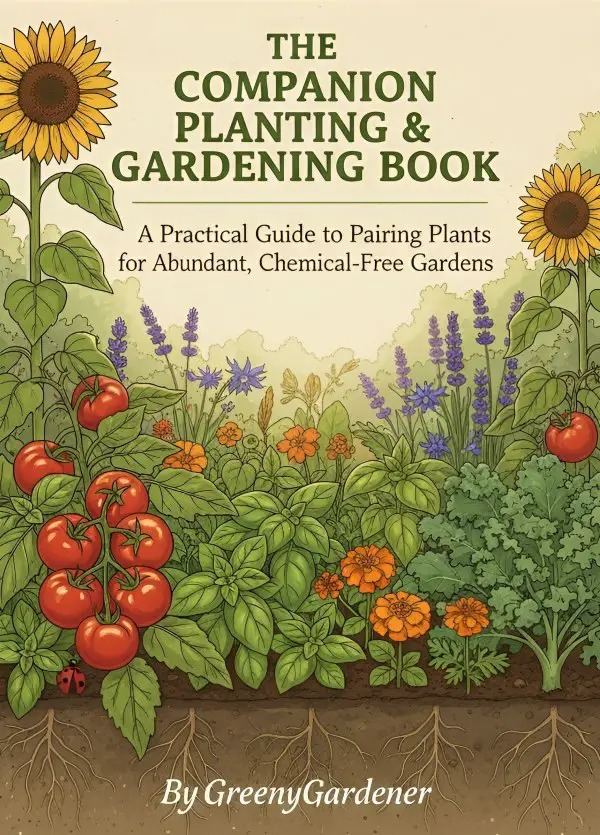Understanding the Root System of the Hibiscus Plant: A Comprehensive
The root system of the hibiscus plant plays a vital role in its growth, health, and bloom production. Known for its vibrant flowers and lush foliage, the hibiscus plant thrives best when its roots are well cared for.
In this guide, we will explore everything about the hibiscus root system, including its structure, growth patterns, care requirements, and signs of potential root issues. For hibiscus enthusiasts and gardeners alike, understanding the plant’s root system is key to cultivating healthy, blooming plants.
What's On the Page
- 1 The Structure of Hibiscus Roots
- 2 Root Growth Patterns in Hibiscus Plants
- 3 Soil Requirements for Healthy Hibiscus Roots
- 4 How to Promote Healthy Root Growth in Hibiscus
- 5 Common Hibiscus Root Problems and Solutions
- 6 Repotting Hibiscus Plants to Support Root Health
- 7 Signs of Healthy Hibiscus Roots
- 8 Conclusion
The Structure of Hibiscus Roots
Hibiscus plants have a fibrous root system, which differs from the taproot system found in many other plants. Fibrous roots consist of numerous thin, hair-like roots that spread out from the plant’s base rather than extending deep into the ground. This structure offers several advantages:
- Efficient water and nutrient absorption due to the increased surface area.
- Shallower depth allows hibiscus plants to thrive in pots or in garden beds with limited soil depth.
- Support against soil erosion as the fibrous roots hold the topsoil firmly.
These traits make hibiscus plants versatile, allowing them to adapt well to container gardening, outdoor beds, or even indoor setups. However, because of this root structure, hibiscus plants are sensitive to soil moisture levels and require specific care to avoid issues like root rot.
Root Growth Patterns in Hibiscus Plants
The root system of the hibiscus plant develops in unique patterns that influence its health and growth:

🌿 The Companion Planting & Gardening Book (eBook)
Bigger harvests, fewer pests — natural pairings & simple layouts. $2.40
Get – $2.40
🪴 The Pest-Free Indoor Garden (eBook)
DIY sprays & soil tips for bug-free houseplants. $1.99
Get – $1.99- Lateral Spread: Hibiscus roots spread outward more than they grow downward. This means that when planted in the ground, hibiscus roots tend to cover a larger surface area rather than delving deeply into the soil.
- Surface-Level Absorption: Since hibiscus roots grow closer to the soil surface, they are highly efficient at absorbing moisture and nutrients from the topsoil. However, this also makes them more susceptible to fluctuations in soil moisture.
- Container Adaptability: Hibiscus plants adapt well to container gardening as their root system doesn’t require extensive depth. In containers, hibiscus roots will grow within the available space, making it essential to periodically check for signs of root crowding.
Soil Requirements for Healthy Hibiscus Roots
The success of a hibiscus plant is heavily influenced by the type of soil it is grown in. The ideal soil should provide good drainage, adequate aeration, and sufficient nutrients.
1. Drainage is Essential
Hibiscus roots are particularly vulnerable to root rot if left in waterlogged soil. Well-draining soil ensures excess water flows out, reducing the risk of waterlogged roots. Adding materials like perlite, coarse sand, or bark chips to the soil mix can enhance drainage while maintaining sufficient moisture.
2. Nutrient-Rich Soil
Hibiscus plants are heavy feeders, especially during their growing and blooming seasons. A nutrient-rich soil mix, combined with regular feeding, supports healthy root development and promotes strong blooms. Consider adding a slow-release fertilizer or incorporating organic compost to enhance the nutrient content of the soil.
3. Soil pH Levels
The ideal pH range for hibiscus plants is slightly acidic to neutral (6.0–7.0). Maintaining this pH balance helps the roots efficiently absorb nutrients from the soil, leading to healthier plants and more abundant flowering.
How to Promote Healthy Root Growth in Hibiscus
Proper care of the hibiscus root system is essential to ensure vibrant, blooming plants. Here are some methods for supporting healthy root development:
1. Consistent Watering Routine
Given their fibrous root system, hibiscus plants require a balanced approach to watering. Consistency is key: too much water can lead to root rot, while too little will dry out the roots and stunt growth.
- Check soil moisture regularly by feeling the top inch of soil. Water only when it feels dry to the touch.
- Water slowly to allow the soil to absorb moisture evenly. This reduces the risk of over-saturation.
2. Pruning and Repotting for Root Health
Regular pruning and repotting are beneficial for the hibiscus root system, especially for container-grown plants.
- Prune Leggy Growth: Pruning encourages root activity, as it stimulates new growth and helps prevent the plant from becoming root-bound.
- Repot as Needed: Hibiscus plants in containers need repotting every 1-2 years. Repotting provides fresh soil, which replenishes nutrients and offers additional space for root expansion.
3. Mulching for Moisture Retention
Mulching around the base of outdoor hibiscus plants helps retain soil moisture, especially during warmer months. Organic mulches, such as wood chips or bark, are ideal for hibiscus plants, as they slowly break down, providing nutrients to the soil and keeping the roots cool.
Common Hibiscus Root Problems and Solutions
Even with the best care, hibiscus roots can sometimes experience issues. Understanding common root problems and their solutions is essential for keeping the plant healthy.
1. Root Rot
Root rot occurs when hibiscus roots are left in excessively moist soil, leading to decay. This issue often arises from poor drainage or overwatering.
- Solution: If you suspect root rot, gently remove the plant from its pot and trim away any affected roots. Repot the plant in fresh, well-draining soil, and ensure the pot has proper drainage holes.
2. Root-Bound Issues in Containers
When hibiscus roots outgrow their container, they become root-bound, which restricts nutrient and water uptake.
- Solution: If roots are circling the pot’s edges, it’s time to repot your hibiscus. Gently loosen any circling roots before transferring the plant to a slightly larger container.
3. Nutrient Deficiency
Yellowing leaves, stunted growth, or poor flowering can indicate nutrient deficiencies, often stemming from poor soil quality or inadequate feeding.
- Solution: Apply a balanced fertilizer formulated for hibiscus plants or other tropical plants, following package directions. Regular feeding during the growing season will support healthy root function and vibrant blooms.
Repotting Hibiscus Plants to Support Root Health
Repotting a hibiscus plant provides it with fresh soil and extra space for root expansion, both of which are essential for healthy growth. Here’s a quick guide to repotting hibiscus:
- Choose the Right Pot: Go up only one pot size to avoid over-potting, which can lead to water retention and root rot.
- Prepare the Soil Mix: Use a well-draining soil mix that retains some moisture. A combination of potting soil, perlite, and compost works well for hibiscus.
- Remove the Plant Carefully: Gently tip the plant out of its pot, and inspect the roots. Trim any damaged or overly long roots.
- Position and Fill: Place the hibiscus in the new pot, fill with soil, and gently press down around the roots. Water the plant thoroughly after repotting.
Signs of Healthy Hibiscus Roots
Healthy hibiscus roots are essential for sustaining vibrant blooms and lush foliage. Indicators of healthy roots include:
- White or Light Tan Color: Healthy hibiscus roots are typically white or light tan. Darkened or mushy roots may signal root rot.
- Firm Texture: Roots should feel firm to the touch, with no signs of softness or decay.
- Fresh, Earthy Smell: Healthy roots should have a neutral, earthy smell, without any foul odors.
By ensuring the health of the hibiscus root system, you can support the plant’s overall health and encourage stunning blooms throughout the growing season.
Conclusion
The hibiscus root system plays an essential role in the plant’s overall health, growth, and blooming potential. By understanding the structure of hibiscus roots and providing the right care including well-draining soil, consistent watering, and occasional repottin you can cultivate a thriving hibiscus plant that will brighten any garden or indoor space.
Paying close attention to the signs of healthy roots and taking proactive steps to address root issues are key to maintaining a robust, flowering hibiscus plant.
- Potato Growing Ideas – Unlock Abundant Harvests From Your Own - December 29, 2025
- Potato Plant Pests – Your Ultimate Guide To Identification, - December 29, 2025
- How To Get Rid Of Potato Bugs In The House – Your Ultimate - December 29, 2025
